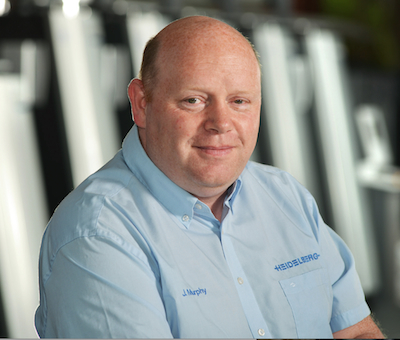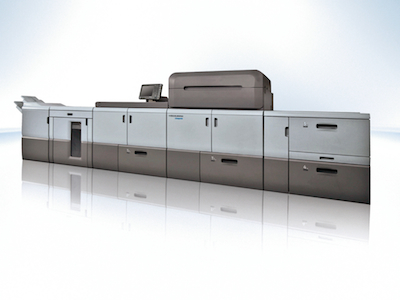Linoprint CP
After success with Ricoh’s first generation of colour digital cut sheet production presses, Heidelberg is ploughing ahead at full speed with the second generation.
Heidelberg talked to Digital Printer towards the end of 2014 about the importance of integrating digital presses and offset equipment such as CTP and litho presses within a single workflow, and with the imminent launch in the UK of its Prinect Digital Front End (DFE) alongside the latest generation of rebadged Ricoh systems, you would have to think that it is better placed than most manufacturers to make this a reality.
Customers – existing and potential – can see this at first hand at a June event to be held at Heidelberg UK’s Brentford showroom, which has housed the new presses (in Heidelberg nomenclature, the Linoprint CP and Linoprint CV) together with the DFE since mid-May. Showing all of this in tandem at the ‘Dedicated 2 Digital’ event on June 17 will be a great opportunity for the company to put its message across in a practical way.
‘The really interesting thing is that we are replacing the Fiery controller,’ said Prinect products specialist John Murphy. ‘We are using a Heidelberg renderer and this means that we should get excellent output results when comparing to offset. We are using the same renderer with the same algorithms that put the dots on a plate from a Suprasetter. We should be able to offer consistency from a litho and digital environment.’
The intention is that at Dedicated 2 Digital, Heidelberg and its partners (ROI360 on the web to print side and Tharstern on the MIS side) will show a fully joined up workflow from web to print through MIS and into the Prinect workflow. Three jobs will be produced on the presses; these are intended to be a simple two-page leaflet, a complex hybrid job with a digital cover and litho text, and a ‘bomb’ – a term used to describe an order that combines print and other products, which in this case may be a box of golf balls. Additional partners will be Polar for cutting solutions, Morgana for finishing and TheMagicTouch showing how print can add sales value to other products such as mugs and t-shirts.
Such is the nature of the digital print market that companies are faced with particular challenges, among them how do they rationalise and decide how a job should be produced? What levels of automation do they put in place to be able to make money from every aspect of the business? John Murphy believes the Prinect DFE will help print companies to make these decisions quickly and cost effectively.

John Murphy
‘Five years ago, to make money from digital you had to do 50 jobs a day. This makes that a reality. To configure a modern automated workflow is relatively simple and others can do that too. But ours makes a decision based on who the customer is, the type of product that it is, the value of the product or the quality of the supplied data. Those things need to be considered, otherwise we are in reprint hell. You need a workflow with different levels of automation and that’s hopefully what we will show in the live demo. The value of the product is the greatest driver. I’ve seen a lot of print sites that have developed processes that have stopped jobs going wrong. They get a digital device and apply the same processes to those jobs, even though the value is less; but with proper preflighting you can automate a lot of those jobs. The one-workflow-fits-all scenario is a thing of the past.’
The Linoprint CP (Commercial Performance) and Linoprint CV (Commercial Value) equate to Ricoh’s Pro C9100 and Pro C7100. The CP is the higher productivity machine, with output speeds of 110 or 130 A4 pages per minute, while the CV adds the differentiator of a fifth colour white or clear option, alongside 80 or 90 A4 pages per minute speeds.
Chris Matthews, Heidelberg UK’s digital product specialist, believes many companies will be interested in both systems – the CP for productivity (a one million pages per month duty cycle), the CV for higher value applications.
‘The USP is the total cost of ownership and the output capability of the product,’ he went on. ‘It’s a very high performing product but not at the cost you expect compared to other presses that are capable of printing one million per month.’
Given the relationships that many printers already have with Heidelberg through litho press, CTP, finishing and consumables deals, there is also the possibility to package a Linoprint purchase within something else. ‘There are different ways of financing the Linoprint CV or CP,’ he confirmed.





